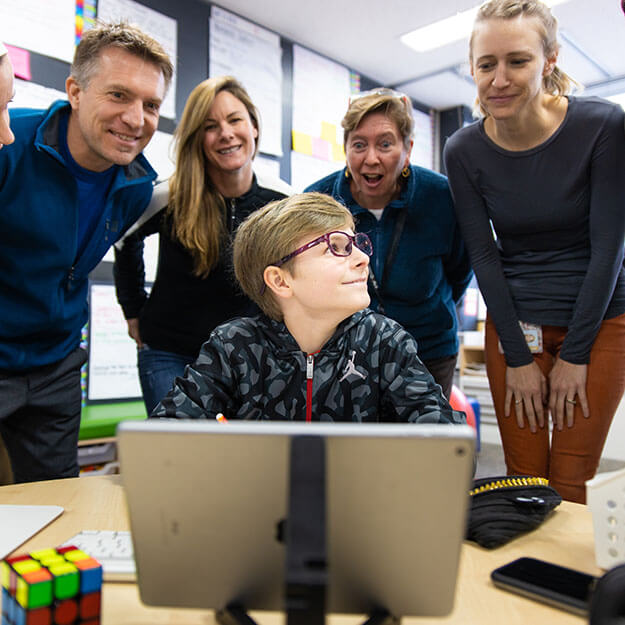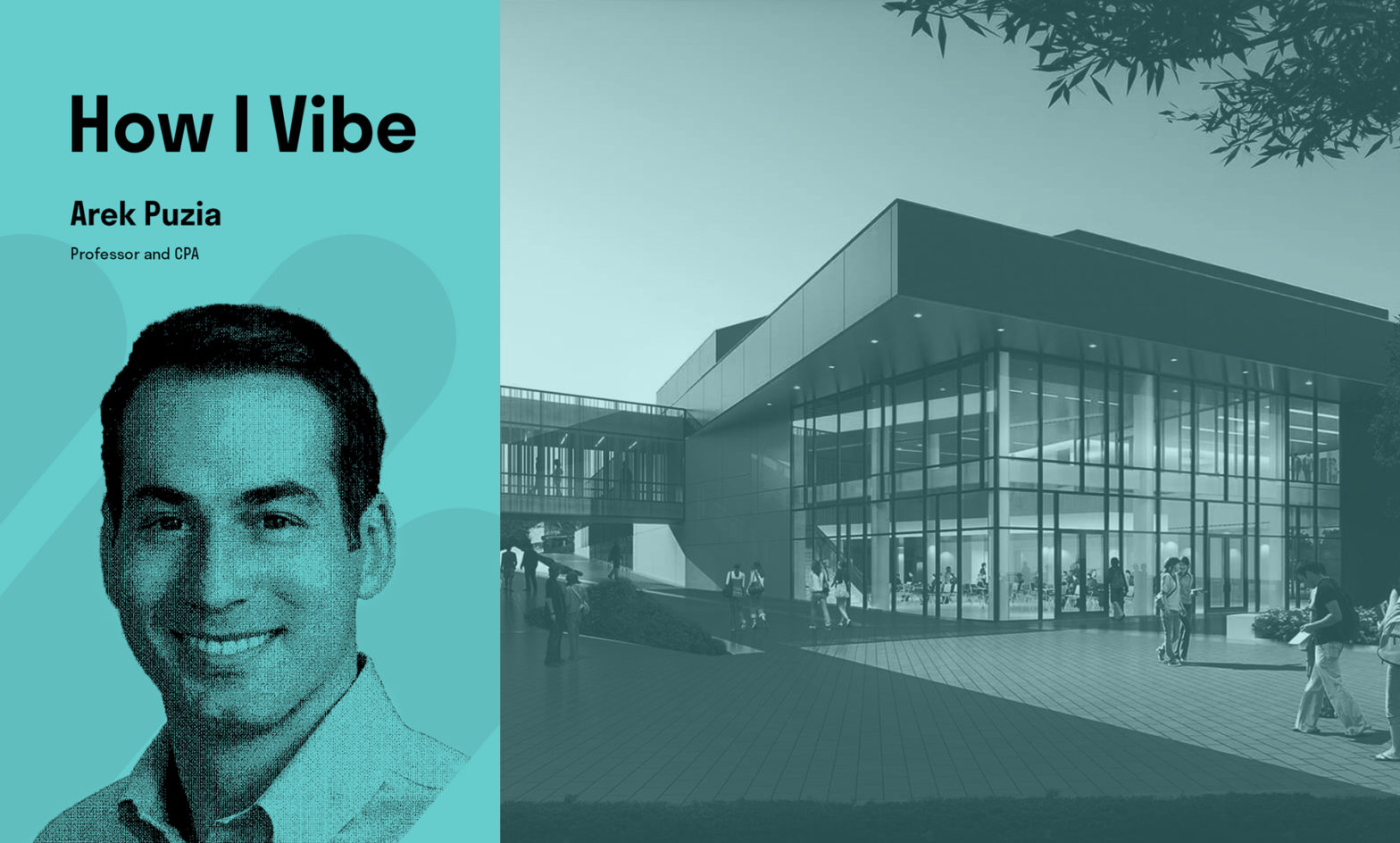Diablo Valley College, a two-year community college in Northern California, serves a diverse population of 28,000 students across its two campuses in Pleasant Hill and San Ramon. When it came time to decide what the fall 2020 semester would look like, the answer was pretty clear: the majority of classes would be taught online.
This overhaul from how the school normally operates would be enough to overwhelm anyone. But if you’re like Arek Puzia, you could see this as an opportunity to get creative, make some adjustments, and bring new value to your work. Read on to see how this professor and CPA is making the most of his chance to thrive alongside his students and clients in a collaborative digital space.
Going back to the classroom
Professor Puzia’s resume gives him plenty of real world experience to draw from when he’s teaching. As he put it, “I’ve been in business and finance my whole life. I worked in capital markets for Merrill Lynch out of London for a few years. Then, I was an investment banker here in the Bay Area. I left that and, with my now-business partner, we set up PathWise, which is a wealth management firm. We have about 100 clients and manage around $100 million.”
Three years ago, Puzia heard that Diablo Valley was hiring faculty to teach accounting. (Their Pleasant Hill campus is just a few miles from the PathWise office.) He attended DVC prior to completing his undergraduate degree at UCLA, so he applied and joined the team. Puzia has been teaching in the college’s business, finance, and accounting department since then.
New technology in a changing academic climate

Before the coronavirus pandemic hit, designing more online courses wasn’t a top goal for many schools. Now that the change is necessary, Puzia said, “Trying to transition a lot of courses to online learning is a bit of a challenge for any institution, but certainly for a public one where there isn’t much history of it. So it’s been an interesting summer.”
But beyond the fall semester, developing online courses makes sense for the future, too. As Puzia explained, “A community college gets students of all abilities and needs. So, we have students with different learning styles. We have students with different disabilities. And so it’s very important when we set up our classes that we can provide a framework for ALL of the students, as much as possible. That’s what led me to looking at different offerings in the digital whiteboard space.”
A flexible definition of ‘classroom time’
The students in Puzia’s classes alone illustrate how diverse the student population is at DVC. Some of his students are working professionals, so it’s not always easy for them to be on campus. He added, “I have some students who are at home with eight family members in a two-bedroom apartment. I think it would be a little inconsiderate to say, ‘You have to be online at 6:00 p.m. for class’ when your family’s running around you.”
With so many different situations to take into account, online learning gives students and teachers more flexibility in defining “classroom time.” So whether Puzia opts for synchronous learning (i.e. all students would log into class at the same time) or asynchronous (students could complete course material and watch recorded lectures on their own schedule), having a digital whiteboard and the right tech accessories would let him offer both.
Related: Interactive Whiteboarding for Distance Learning Lessons
How Puzia chose Vibe
Before finding the Vibe Board, Puzia had limited experience with recording his lectures. (He mostly relied on an iPad to do the trick.) But because accounting qualifies as a Career Technical Education course in California, he secured funding through the state’s Strong Workforce Program. The funding allowed him to assemble a tech setup that could create more professional and accessible presentations.
“Price was obviously a consideration because, in my situation, I was trying to get the school to help with the cost of not only the whiteboard, but also a camera for recording, and computer editing software. Everything adds up pretty quickly.”
After thorough research, the Vibe Board proved to be the best option for Puzia. In addition to its price point, Vibe was the only digital whiteboard that offered a demo to review the product’s functionality. Plus, the Vibe Board’s variety of solutions gave him options for creating an ideal learning environment.
Using Vibe for asynchronous learning

With planning for the fall semester in full swing, Puzia said that using the Vibe Board has been “pretty straightforward. I feel like I’m a 6 or 7 out of 10 in technology, so good enough to be dangerous,” he joked. “But so far, using the Board seems pretty intuitive.”
Puzia is focused on testing different ways to record and edit his lectures, which is important because he plans on designing primarily asynchronous courses. He’s hopeful that this style of teaching will help him to accommodate more students. As he pointed out, “If you have students with disabilities, you really want to be able to do things like caption your videos. It’s really challenging to caption live videos, so I’m trying to, as much as possible, be pre-recording so that people can access those whenever.”
Utilizing learning management systems
DVC’s learning management system, Canvas, is a program that every student accesses for online materials. While the professors at DVC use Canvas to a certain extent, Puzia said the program will play a much larger role in this year’s lesson plans.
“More and more colleges are requiring that everything goes through Canvas,” he explained. “So if I have a publisher that I use a textbook from, and they have software for students to use, I need for that software to be accessed through Canvas. Students can’t access that software through the publisher website.”
And if students are accessing their online textbooks, PowerPoints, and other educational resources on Canvas, Puzia recognizes that having access to Vibe Boards in that same space would be ideal.
“I could post a problem on a Vibe Board, and then I could message the students and say, ‘Click this link in Canvas to get to the Vibe Board problem.’ And they could click that link, and they would hash out that problem. If I could assign a problem on the Vibe Board for all students, then I can mark it up as well, using the annotation tool or something along those lines,” he suggested.
Online options to replace traditional reading and meetings
While students can still purchase physical textbooks, Puzia said that’s not what they’re seeing DVC students utilize nearly as much.
“The school gave the students a questionnaire, and one of the surprising things was how many students do their classes almost exclusively on an iPhone or an Android phone. There are a lot of people who use only a phone for an entire class.” And this, once again, demonstrates the need for creative thinking and accessibility in online education.
Traditional office hours are off the table for fall, too. But Puzia sees that as an opportunity to be even more responsive to his students’ needs. He plans on using Zoom to schedule one-on-one meetings with students as needed.
Using today’s challenges for future success
The biggest takeaway from Puzia’s preparation for the 2020-21 school year is that using new tech tools simply for the sake of using new tech isn’t the point. The point is to make sure you’re adding value to your classes for the benefit of the students.
“Whatever technology solution you design as a professor for students, either create some very clear steps for how students can access that, or keep the technology as user-friendly as possible. It’s a challenge for a lot of students, and you have to be understanding, too,” he said.
Yet he also wants to challenge his students to learn new skills outside of what he covers in lectures. Puzia said that all too often he sees otherwise promising college graduates struggle in their first jobs simply due to lacking basic technical skills.
“Pushing my students to start thinking that way and doing it, I think, is really valuable because at the end of the day I want my students to have jobs. No one’s really going to my accounting classes because they’re bored. They’re usually going to my classes because they want a job. Part of having a job is you have to be comfortable with technology, almost no matter what you’re doing for work. So that was my idea with the digital whiteboard: how can I take things to the next level, and how can I utilize it?”
Looking ahead with Vibe
With the Vibe Board, Puzia sees more opportunities than obstacles for himself and his students, and can already recognize that the investment will be worth it.
“If I’m teaching 200 students a semester, then even a whiteboard that costs a few thousand dollars…I mean, if I can help 10 students a semester by having that, that’s pretty low cost, in my opinion.”
Vibe offers a collaborative solution combining an interactive digital whiteboard and innovative smart software. Increase engagement and efficiency at your brainstorming sessions, virtual training, and classroom sessions by integrating your favorite applications with video conferencing and an infinite, mess-free writing canvas. Collaborate today with Vibe.
Looking for the latest in interactive whiteboard technology? Check out Vibe today!
